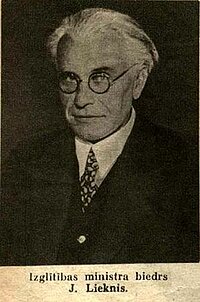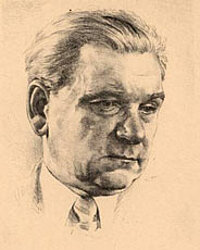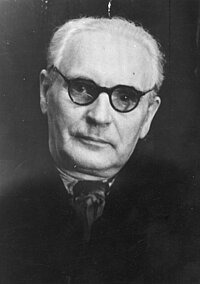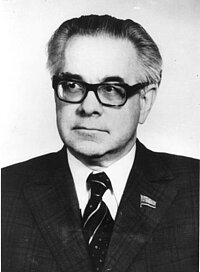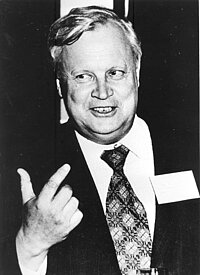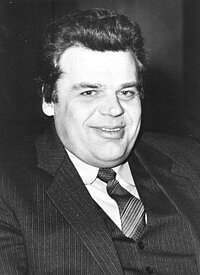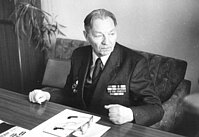In 1940, when the Soviet Union occupied Latvia, the Institute of Latvian History was reorganised, replacing the administration and the staff of the institute. Deputy Minister of Education in the Kirhenšteins government Jānis Lieknis (1883–1941) was appointed acting director of the institute.
Using the opportunity offered by the regime change, when the Nazi occupation regime replaced the Soviet occupation authorities, on 7 July 1941 A.Tentelis, who had been director of the Institute of Latvian History in the time of the independent Republic of Latvia, assumed the post of director, appointing A.Švābe as assistant director and M.Stepermanis as secretary-general. On 8 July the institute’s board came together and made staff appointments. However, the German occupation authorities decided to close the institute, and its abolition commenced in August. The institute’s premises (at 11 Skolas iela), the archive, library and equipment were transferred to other institutions. In March–April 1942 most of the institute’s staff were employed at the newly-established Historical Repository, formally a department of the State Archives. The activities of the repository included publishing sources on the history of Latvia, research, and compilation of historical information and supplementary card catalogues with bibliographical information for the Nazi administrative institutions. The Historical Repository ceased its activities in autumn 1944.
Administration and staff. Director of the Historical Repository from 1942 up to 1944: Arveds Švābe (1888–1959). Staff of the repository: Alfrēds Altements (1902–1946), Uldis Ģērmanis (1915–1997), Marģers Stepermanis (1898–1968), Teodors Zeids (1912–1994), Jānis Tālivaldis Zemzaris (1902–1996) and others.
Location. 30 Baložu iela, Riga, not far from the State Archives on Slokas iela.
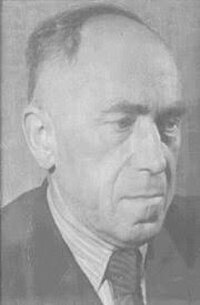
On 15 January 1945 the Central Committee of the Latvian Communist (Bolshevik) Party approved the recommencement of the activities of the Institute of History as part of the State University of Latvia. Director: Marģers Stepermanis.
On 20 June 1946, by order of the Council of Ministers of the USSR, five institutes, including the Institute of History, were placed under the Latvian SSR Academy of Sciences. The Institute of History and Material Culture of the Latvian SSR Academy of Sciences was established, renamed in 1959 the Institute of History of the Latvian SSR Academy of Sciences.
Directors of the institute: 1946–1963 – Kārlis Strazdiņš (1890–1964), 1963–1970 – Aleksandrs Drīzulis (1920–2006); 1970–1981 – Valentīns Šteinbergs (1915–2011); 1981–1988 – Vincents Karaļuns (1918–1988); acting director 1988–1990, director from 1990 – Indulis Ronis (1943–2016).
Staff: Vilnis Albiņš (1931–1973), Aina Alsupe (1926–2015), Emma Andersone (1900–1992), Zigrīda Apala, Jānis Apals (1930–2011), Māris Atgāzis (1935–2018), Marta Āboliņa (1898–1995), Jānis Babris (1911–2002), Lida Balevica (1933–2021), Viktorija Bebre, Tatjana Berga (1944–2020), Ināra Bērziņa, Jānis Bērziņš (1941–2017), Valdis Bērziņš, Anatolijs Bīrons (1929–2006), Daina Bleiere, Edgars Blūmfelds (1928–1998), Rita Brambe, Boļeslavs Brežgo (1887–1957), Andris Caune, Saulvedis Cimermanis, Elga Čivkule, Jolanta Daiga (1920–1984), Raisa Deņisova (1930–2019), Vasīlijs Dorošenko (1921–1992), Teodors Draudiņš (1890–1962), Linda Dumpe, Jānis Dzintars (1928–2007), Astra Golovčika, Ilga Grasmane, Jānis Graudonis (1913–2005), Rita Grāvere, Regīna Greitjāne (1936–2006), Aija Jansone, Lidija Jefremova (1929–2000), Velta Kalnača (1934–2015), Anete Karlsone, Mihails Kozins (1918–2008), Anna Krastiņa (1919–?), Andrejs Krastiņš, Jānis Krastiņš (1890–1983), Olga Krēgere, Mihails Kudrjavskis (1922–?), Valdis Kronis (1944–1998), Ingrida Leinasare (1929–2004), Mirdza Lendiņa, Dzidra Liepiņa (1926–2003), Ilze Biruta Loze, Roberts Malvess (1905–1982), Austra Mieriņa (1926–2012), Ēvalds Mugurēvičs (1931–2018), Jurijs Ņetjosins (1928–?), Ieva Ose, Dzidra Irēna Ozoliņa (1933-2019), Velta Pāvulāne, Vilnis Pāvulāns (1938–1994), Valda Pētersone, Jānis Ruberts (1930-1984), Vasilijs Savčenko (1923–2014), Mirdza Slava (1924–2001), Auseklis Spreslis (1928–1992), M. Stepermanis, Jānis Straubergs (1886–1952), Henrihs Strods (1925–2012), Ādolfs Stubavs (1913–1986), Melita Svarāne (1916–2011), Irēne Šneidere, E. Šnore, Ilga Tālberga (1943–2014), Silvija Tilko, Raisa Tīzenberga (1910–1958?), Rihards Treijs (1931–2013), Lilita Vanaga, Andrejs Vasks, Antonija Vilcāne, Tālivaldis Vilciņš (1922–1997), Banga Vilks (1927–2014), Dzintra Vīksna (1940–2006), Rudīte Vīksne, Aurora Ūdre (1930–2007), Francis Zagorskis (1929–1986), Ilga Zagorska, Anna Zariņa (1921–2015), Antoņina Zavarina (1928–2015), T. Zeids, Daina Zemzare (1911–1971), Māris Zunde, Jānis Zutis (1893–1962), Ēriks Žagars and others.
Tasks of the institute: To investigate questions relating to Latvian history, archaeology, ethnography and philosophy, applying Marxist-Leninist methodology, unmasking the concepts of “bourgeois nationalist” and Baltic German historiography. Research areas: “ancient history of Latvia, agrarian and economic history of the Latvian people, emergence of the industrial proletariat and the workers’ movement, the Revolution of 1905–1907, the struggle by the workers of Latvia for Soviet power in 1917–1920, the history of the Latvian Rifles, the Socialist Revolution of 1940 in Latvia, the history of Latvia during the Great Patriotic War, the history of socialist construction in the Latvian SSR, issues of historiography, ethnographic aspects of the everyday life of the population of the Latvian SSR”. (Bīrons, Anatolijs (ed.) (1976). Latvijas PSR Zinātņu akadēmijas Vēstures institūts. Rīga: Zinātne, p. 7). The most important task was to compile an “academic” history of the Latvian SSR.
In spite of the ideological framework, the research yielded significant research findings relating to the archaeology and ethnography of Latvia, physical anthropology, the history of Riga, agrarian history and the campaigns of the Latvian Rifles. It is thanks to this work that nowadays researchers in Latvia and abroad may benefit from the unique collections of primary sources held at the Repository of Archaeological Material, the Repository of Bioarchaeological Material and the Repository of Ethnographic Material.
Structure of the institute: The institute was structured in accordance with the main research directions of history, archaeology, physical anthropology and ethnography, the names of the departments and sectors changing over time. Starting from 1963, the institute also included philosophy and sociology sectors. In 1981, these formed a separate Institute of Philosophy and Law of the Academy of Sciences.
Address of the institute: 10/12 Meistaru iela, 19 Turgeņeva iela / 1 Akadēmijas laukums, Riga.
Serial publications: Arheoloģija un etnogrāfija (Archaeology and Ethnography, from 1957), Materiāli par arheologu un etnogrāfu …. gada ekspedīciju darba rezultātiem (Materials of the Results of Archaeological and Ethnographic Fieldwork in the Year ..., 1958 onwards, title varying).

 Academic Centre
Academic Centre